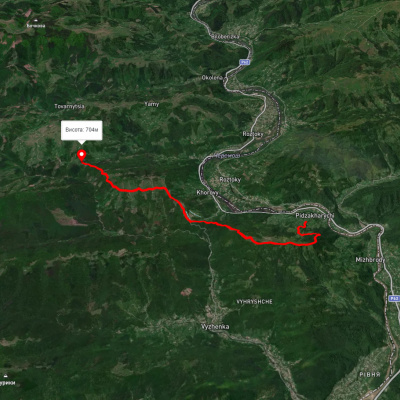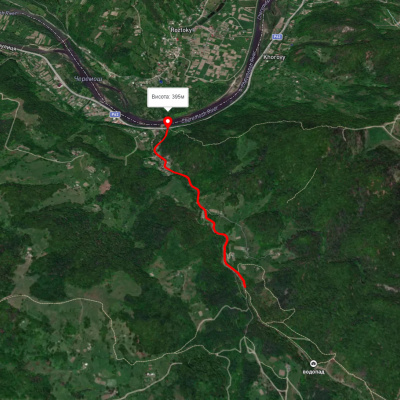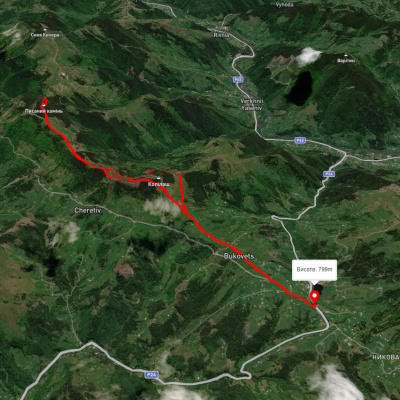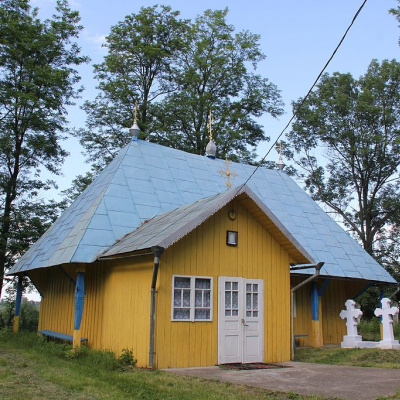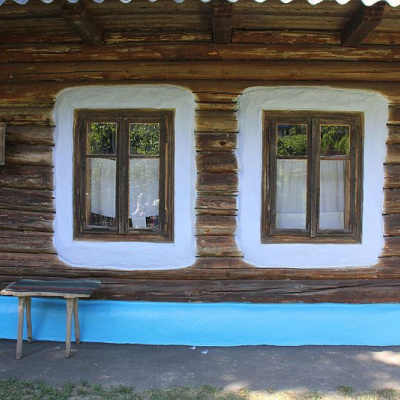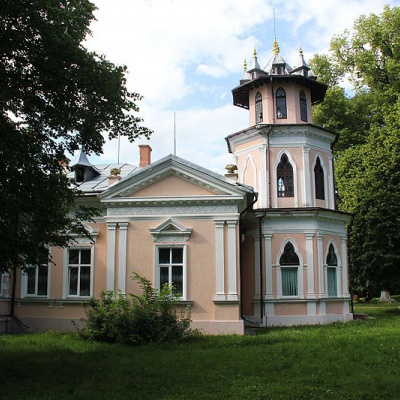Chortoria
Chortorya is a village located in the Kitsman district, Chernivtsi region. It is located on the right bank of the Cheremosh River, near the Chernivtsi-Vashkivtsi-Vyzhnytsia road. The distance to the regional center is 39 km. The population is 758 inhabitants. Chortorya, from the Slavic word for mole. The population derives the name "devil" from the surname Chartoryiskyi.
Among the architectural monuments, the village is known for one of the most beautiful palaces in Bukovyna, the Manesku Palace (Rutkovsky Palace), which now houses a psychoneurological boarding school. There is also an old wooden church in the village, which according to legend was transported by the Cheremosh from the Carpathians.
It is the birthplace of Ivan Mykolaychuk and home to the Ivan Mykolaychuk Art and Memorial Museum and Estate. To get there, you need to turn right off the highway near the bus stop. On the road there is a signpost with the inscription "Museum". Follow the sign and, near the new church, turn right onto the street named after the famous actor. Soon we will see a traditional Ukrainian wooden hut with a typical fence on the right on a hill. This is the manor house we are looking for. What we have seen now is a scientific reconstruction of the house where the Mykolaychuk family lived, made in 1991.
He was called the face and soul of Ukrainian poetic cinema. No Ukrainian film of the 60s and 70s of the twentieth century could do without his participation. Famous actors and directors, friends of Mykolaychuk, including Serhiy Parajanov, visited Chortorya. Here is what Sergei Parajanov said about Mykolaychuk: "I do not know a more national folk genius... Before him, it was Dovzhenko."
Ivan Mykolaychuk was born on June 15, 1941, in Chortorya and died on August 3, 1987, in Kyiv. During his lifetime, he played roles in many films, the most famous among them being Taras Shevchenko (Dream, 1964), Ivan (Shadows of Forgotten Ancestors, 1964), David Motuzyka (Weeds, 1966), Vasyl (The Missing Letter, 1982), and Petro (White Bird with a Black Mark, 1971). In the latter, he was also a co-author of the script. In addition, in 1979 Mykolaichuk directed Babylon XX, based on the novel by Lebedyn, in which he also composed the music and played the role of Fabian, and in 1982 he directed the film So Late, So Warm Autumn, in collaboration with V. Korotych. In his person, the Ukrainian nation has a global immortal positive hero who awakened the national spirit of Ukrainians, but Ivan Mykolaychuk was never awarded the title of People's Artist. The communists of the time considered him a nationalist.
Every year on June 15, the actor Ivan Mykolaychuk's birthday, the village hosts a large-scale festival called "To Visit Ivan" with a commemoration of the artist near his bust, along with a museum, a concert by folk and folklore groups, a theater, and a fair with visitors from all over the Chernivtsi region.
Everything in the house-museum is as it was during Ivan Mykolaychuk's lifetime: a blue-painted porch, small windows, a bench near the house, stone millstones in the storeroom, an old loom, walls decorated with towels, and Ivan's suitcase with which he used to go to Chernivtsi to study. And in the cradle, which is located in the middle of the room, ten children were cradled... By the way, the house-museum had a reading room back in the 1920s, and the actor's father often brought books in Ukrainian and raised his children in the spirit of patriotism. Young Ivan also loved to take part in local fights.
The next interesting object in Chortoryia is located in the western part of the village. It is one of the most beautiful and oldest palaces in Bukovyna. However, asking the villagers about its location is useless. Ask instead where the psychoneurological dispensary is located, and the locals will be happy to show you a one-story building with a three-tiered tower located in the park. No one knows the exact date of construction of the palace. In the list of local architectural monuments of Chernivtsi region, the palace dates back to the nineteenth century. However, other sources indicate a different date of its construction: the end of the seventeenth or beginning of the eighteenth century. There is also uncertainty about its name. In the above-mentioned list, the monument is listed as the "Manescu Palace". It is likely that the Romanian wealthy Manescu was not the first owner of this miracle. Tradition says that the palace used to be owned by a Polish feudal lord who lost it at cards. Be that as it may, a unique stone monument of the past centuries has survived to this day - a palace in an eclectic style with neo-Gothic window openings of the main portal, a classicist statue above the portico and a beautiful tower with many decorative turrets on the Romanian-style dome.
Chortorya Park is located in the village, and the Chortorya Ornithological Reserve is not far from the village. Chortoryia is a station of the local Nepolokivtsi - Vyzhnytsia railway. There is also an old, classical Bukovynian "hut" type church with a characteristic side extension to the Babynets. It was built in 1749-1750 and consecrated in honor of the Nativity of the Blessed Virgin Mary.
Які туристичні (пішохідні) маршрути проходять через/біля Chortoria?
Пропонуємо пройти такі туристичні (пішохідні) маршрути через/біля Chortoria: пер. Німчич - Протяте Каміння, Смугарські водоспади, с. Буковець – Писаний Камінь – с. Буковець, Писаний Камінь – с. Буковець, Шешори - Росохата, с. Космач, через г. Ротило, г. Грегіт, г. Біла Кобила до с.Буковець
